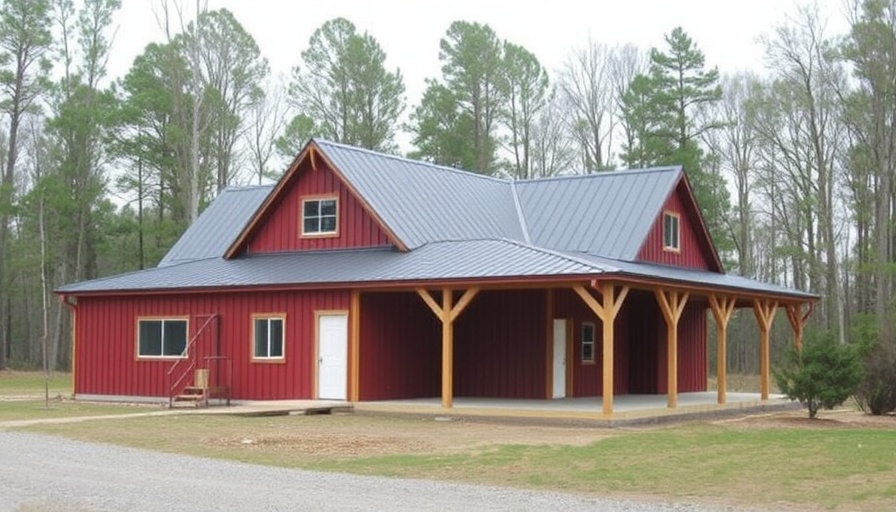
Understanding the Barndominium Trend
As the housing market evolves, barndominiums are gaining popularity among individuals looking for unique, customizable living spaces. Combining the rustic charm of a barn with modern amenities, these structures cater to those seeking a cost-effective yet stylish option. A barndominium can embody personal style while being an effective solution to rising housing costs, especially in rural areas.
DIY vs. General Contractor: What's Right for You?
When it comes to building your own barndominium, two major routes present themselves: DIY construction or hiring a general contractor. Both options have their merits, depending on your expertise, available time, and budget. Understanding the scope of each choice is vital if you’re committed to creating your dream home.
The DIY Approach: What You Need to Know
Opting for the DIY approach involves taking on numerous responsibilities, from budgeting to subcontracting various tasks. If you’re confident in your skills and have the time to manage the project, choosing to go the DIY route can lead to significant cost savings—upwards of 10-20% compared to hiring a general contractor.
The Pros and Cons of DIY
While the DIY method often reduces costs, it also requires careful planning and hands-on management:
- Cost Savings: Keep more money in your pocket by skipping contractor fees.
- Complete Control: Have full autonomy over every facet of construction, from materials to design.
However, potential drawbacks include the time commitment and the risk of mistakes, which can lead to delays and added expenses.
The Role of a General Contractor
If the thought of managing a construction project seems overwhelming, hiring a general contractor might be the better option. A contractor can streamline processes, manage subcontractors, and ensure that projects stay on schedule and within budget.
Benefits of Hiring a General Contractor
- Expertise: Entrust your build to professionals with experience and industry knowledge.
- Time Efficiency: Allow yourself to be hands-off as the contractor manages day-to-day operations.
- Reduced Risk: Minimize the possibility of construction missteps.
While these benefits come at a price, often adding to the overall project cost, the peace of mind that a professional brings can be worth it for many homeowners.
Making the Right Choice for Your Barndominium
The decision on whether to tackle your barndominium build independently or hire a contractor boils down to your personal circumstances. Evaluate your skills, free time, and financial considerations. Remember, whichever path you choose can lead to the rewarding experience of creating a home that reflects your vision.
In conclusion, carefully weigh both the DIY and general contractor routes for building your dream barndominium. Each approach offers distinct advantages and challenges that can significantly impact your construction experience and the final outcome.
If you're eager to dive deeper into barndominium construction insights and uncover more about making informed decisions for your project, subscribe for our exclusive insights and resources tailored for aspiring builders like you!
 Add Row
Add Row  Add
Add 




Write A Comment